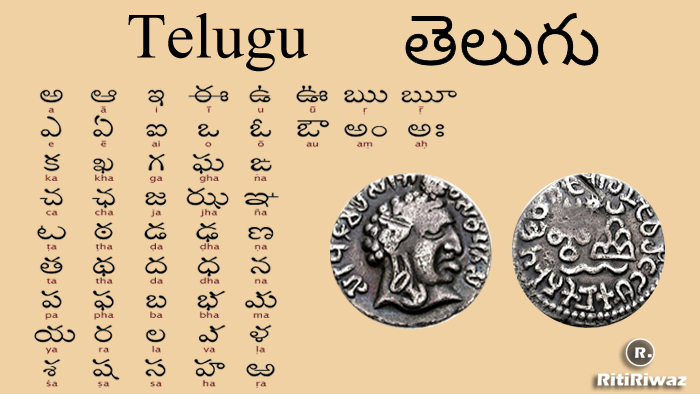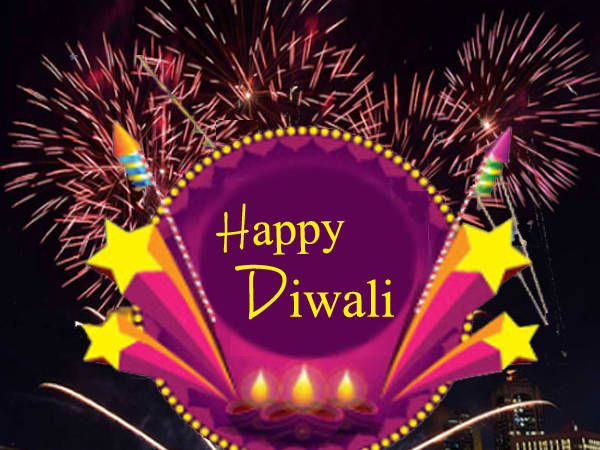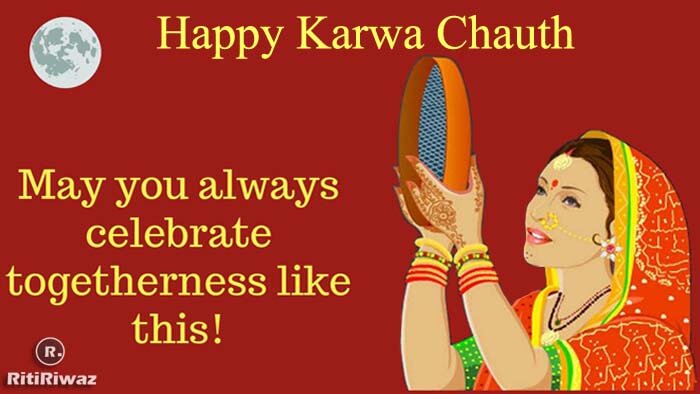Telugu Language | Telugu History and Facts

Telugu (తెలుగు) is the main spoken language in the southern Indian states of Andhra Pradesh and Telangana. It is the fourth most spoken language in India, it is one of the 22 official languages and 14 regional languages of India. It is the official language of the state of Andhra Pradesh and Telangana and also has the official language status in the Yanam District of the Union Territory of Pondicherry.
Among the other Indian languages, Telugu comes second to Hindi. Telugu has been successful in reaching other parts of the world too, such as Burma, South Africa, and the USA. The language is also called ‘Italian of the East’ by some of its admirers, because of its mellifluous nature.
Andhra Pradesh was formerly known as ‘trilinga rajyam’, the land between three lingas – Srisailam, Kaleshwaram, and Bhimeshwaram. So, Telugu was known as ‘trilinga basha’, later changed to ‘telungu’ and finally reached the current ‘Telugu’.
History

Telugu belongs to the South Central branch of the Dravidian language family. Said to have originated in the 1st century A.D. as per historical records, the Telugu script is said to have been created from the Pahlava script and is very similar to that of Kannada. The Telugu language has an Indo-Aryan vocabulary to a large extent and has a major influence on Sanskrit.
The language is known to have originated from the Proto-Dravidian language. It was also referred to as `Tenugu’ in earlier times and came to be known as `Andhra’ in medieval times. Some also argue that Telugu was derived from `Trilinga’ – the three lingas. A general description of the land of the Telugus was made in medieval times as `the landmarked by three lingas of the three famous shrines of Draksharamam (East Godavari district), Kaleswaram (Karimnagar district), and Srisailam (Kurnool district).
Written materials in Telugu date from 633 AD. Telugu literature begins with an 11th-century translation of the Sanskrit classic Mahabharata. With the arrival of the Muslim rule, many Arabic and Persian words became part of the Telugu language. But they were confined to the spoken language and to the language of the judiciary and the executive.
The influence of Persian and Arabic is discernible to a considerable extent in the languages spoken in Telangana due to its long association with Muslim rule. There is also a great element of English words in the vocabulary of Coastal Andhra, as these regions were directly under British rule for nearly a century.
Although culturally Telugu is close to its southern neighbors — Tamil and Kannada — genetically, it is closer to its northern neighbors — Gondi, Konda, Kui, Kuvi, Pengo, and Manda. There is evidence to show that these languages were freely borrowed from Telugu even from the prehistoric period whereas borrowing between Telugu and Tamil and Kannada has been mostly during the historic period, i.e., post-5th century B.C.
Suggested Read: Andhra Pradesh – Culture and Tradition
It is possible to identify broadly four stages in the history of the Telugu language.
(1) B.C. 200 – A.D. 500
(2) A.D. 500 – A.D.1100
(3) A.D. 1100 – A.D.1400
(4) A.D. 1400 – A.D.1900.
During the first phase, we only come across names of places and personal names of Telugu in Prakrit and Sanskrit inscriptions found in the Telugu country. Telugu was exposed to the influence of Prakrit as early as the 3rd century B.C. From this, we know that the language of the people was Telugu, although the language of the rulers was different.
The first complete Telugu inscription belongs to the Renati Cholas, found in Erragudipadu, Kamalapuram taluk of Cuddapah district and assigned to about A.D. 575. Telugu was exposed to the influence of Sanskrit during this period. It appears that literature also existed in Telugu about the same time because we find literary style in the inscriptions some three centuries even before Nannaya’s (A.D. 1022) Mahabharatam. During the time of Nannaya, the popular language had considerably diverged from the literary language.
In the period A.D. 500-1100, the literary languages confined to the poetic works flourished in the courts of kings and among scholars. Phonetic changes, which occurred in the popular language, are reflected in the literary language, although the two streams remained apart in grammar and vocabulary.
During A.D. 1100-1400 the literary language got stylized and rigid, closing itself from the influence of contemporary spoken language. Ketana (13th century AD), a disciple of Tikkana prohibited the use of spoken words in the poetic works and quoted some spoken forms. During the period A.D. 1400-1900, many changes culminating in today’s form of Telugu took place.
The prose language of the 19th century, as can be seen from the `Kaifiyats’, shows the educated speech as a base with the occasional influence of literary language. We also notice the influence of the Urdu language on Telugu before the spread of English education.
From the foregoing overview of the history of the Telugu language, one can see that what we now use as modern standard Telugu, had its beginnings in the spoken variety, right from the 10th century A.D. The language was progressively enriched by contact with Sanskrit, Prakrit, Urdu, and English from early times.
Circa 1400-1500 AD, Niccolò de’ Conti, a renowned merchant, and explorer traveled across the world towards south-east Asia. He then chanced upon Telugu people and immediately noticed the vowel ending similarly in the language and then coined the term for Telugu as ‘Italian of the East’, because in the west – this property is possessed by Italian.
Suggested Read: Tirupati
Formation of Telugu
The language has such a high influence on Sanskrit that some of its expressions were naturally regarded as Telugu words in the course of time. Some Kannada and Tamil words also became a part of Telugu, but they failed to gain much popularity. Telugu has kept certain unique Sanskrit features, especially in the pronunciation of some vowels and consonants, that have subsequently been lost in some of Sanskrit’s daughter languages, including Hindi and Bengali. Telugu is agglutinative, i.e., it adds suffixes to roots, one after another, to form words and to express grammatical functions. Like all agglutinative languages, Telugu uses postpositions rather than prepositions.
Telugu Writing

Telugu is written with a syllabic alphabet in which all consonants have an inherent vowel. Diacritics, that can appear above, below, before, or after the consonant, indicate a change to another vowel or suppression of the inherent vowel. The script was developed from the Brahmi script. The shapes of Telugu letters resemble those of Kannada. They have rounded shapes because in ancient times writing was done by carving on palm leaves with a sharp point. Sharp angles would have torn the leaves. Telugu is written from left to right.
Below is the text of Article 1 of the Universal Declaration of Human Rights in Telugu.
ప్రతిపత్తిస్వత్వముల విషయమున మానవులెల్లరును జన్మతః స్వతంత్రులును సమానులును నగుదురు. వారు వివేదనాంతఃకరణ సంపన్నులగుటచే పరస్పరము భ్రాతృభావముతో వర్తింపవలయును.
Pratipattisvatvamula visayamuna mānavulellarunu janmataḥ svataṃtrulunu samānulunu naguduru. vāru vivēdanāṃtaḥkaraṇa saṃpannulaguṭačē parasparamu bʰrātṛbʰāvamutō vartiṃpavalayunu.
All human beings are born free and equal in dignity and rights. They are endowed with reason and conscience and should act towards one another in a spirit of brotherhood.
Suggested Read: Kuchipudi
Telugu Dialects
Spoken Telugu has many regional dialects whereas the written form is relatively uniform. Until the 20th century, Telugu was written in an archaic style that differed significantly from the everyday spoken language. During the second half of the 20th century, a new written standard emerged based on the modern spoken language. The ancient Telugu speakers would use the word ‘Bu’ in place of ‘Mu’. The letters of the Prathamaa Vibhakti (Du, Mu, Vu, Lu) were used often a number of times.
The 27 noted dialects of Telugu are Berad, Dasari, Dommara, Golari, Kamathi, Komtao, Konda-Reddi, Salewari, Telaingani, Warangal, Mahaboobnagar (Palamuru), Gadwal (Rayalaseema mix), Narayanapeta (Kannada and Marathi influence), Vijayawada, Vadaga, Srikakulam, Visakhapatnam, Toorpu (East) Godavari, Paschima (West) Godavari, Kandula, Rayalaseema, Nellooru, Prakasam, Gunturu, Tirupati, Vadari and Yanadi (Yenadi).
Literature
Telugu was heavily influenced by Sanskrit and Prakrit. Telugu borrowed several features of Sanskrit that have subsequently been lost in Sanskrit’s daughter languages such as Hindi and Bengali, especially in the pronunciation of some vowels and consonants. Telugu is written in a Brahmic alphabet. Telugu is the only language in India in which every word ends with a vowel, so it is also called as ‘Ajanta Bhaasha’ and because of which most of the songs composed in Carnatic music are in Telugu.
Vocabulary
The basic vocabulary of Telugu is Dravidian in nature and the language is considered to be the most Sanskritized of the Dravidian languages. In addition, Telugu has a significant number of words of Sanskrit and Prakrit origin. It is one language whose vocabulary is extensively derived from two great language families in India namely Sanskrit (Indo-Aryan) and Dravidian.
In the course of time, some Sanskrit expressions used in Telugu got so naturalized that people regarded them as pure Telugu words. Some Kannada and Tamil words were also taken into Telugu but they did not gain much currency. The language is considered to be the most Sanskritized of the Dravidian languages, especially when it comes to the formal, standardized variety of the language taught in schools and used by the government and in Hindu religious practices.






